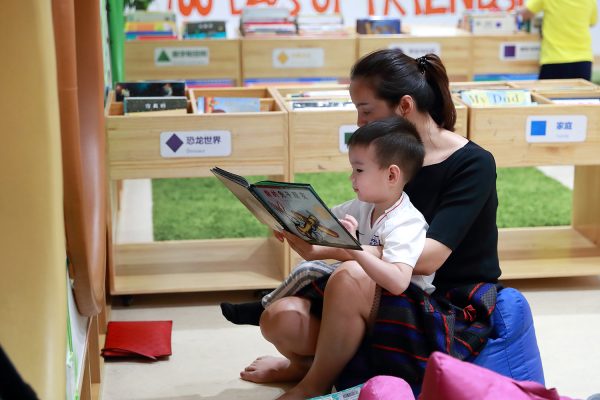Literacy acts in Early Years involve more than merely reciting a text, viewing pictures on the page or learning new vocabulary. Literacy is a dynamic process, which not only involves an individual and a text, but rather a phenomenon simultaneously involving ‘social, cultural, and linguistic acts’ (Cummins, 2005). With this understanding in mind, the purpose of this article will be to demonstrate how parents can develop children’s language abilities through exploring text and print resources (e.g. picture books) to develop and scaffold children’s language abilities.
Given the fact that ‘language and literacy development begins within the home and through family experiences’, many researchers have suggested that parents use stories to serve as a foundation for discussions, with evidence suggesting a positive correlation with gains in language and literacy development in early years (Jimenez, 2006 & Sehlaoul, 2008).

Researchers involved in the Jimenez study introduced parents to six shared reading strategies which parents may wish to try at home:
- Connecting with the text. (e.g. Are you like the main character or different?)
- Praising and encouraging child’s responses.
- Asking more elaborate and well-developed questions. (e.g. What do you think of the main character?)
- Scaffolding the child’s responses by adding new ideas and more details. (e.g. I wonder if Jack grows beans on the farm? What do you think Jack might grow?)
- Speculating about future events in the story (e.g. I wonder what will happen next?)
- Introducing new vocabulary amongst existing (e.g. He is very happy and excited)
The researchers found that, in line with previous research, children’s production of the target language increased as parents implemented the various learning strategies. In addition, the researchers found that parents were more likely to give their children time to speak during reading sessions as their competencies in the techniques and strategies increased. The most frequently used strategies by the parents were number 1 and number 3 listed above. The researchers conjecture that these two strategies were the most frequently used because they “were also the most rewarding” in terms of assisting children by further scaffolding the development of their linguistic skills. In short, by asking simple questions and affording children the opportunity to speak and be listened to, children’s language development is supported.

In conclusion, parents can benefit from having children talk about the stories that are read at home while extending their children’s ideas and understanding about key concepts that appear in stories. The secret to success in developing children’s language as they talk about their favourite stories lies in the following types of intervention:
- Allow children to be autonomous and decide which books would be read and what would be discussed in those books.
- Make ‘declarative statements’ and allow children the chance to respond to those statements.
- Ask both open-ended and closed questions and give children time to respond to those questions.
- Scaffold a child’s response to the text or question by using more ‘advanced language’ or demonstrating more ‘complex’ versions of the child’s utterances (Lim & Cole, 2002).
References
- Cummins, J. (2005). Teaching for cross-language transfer in dual language education.
- Jimenez, T. (2006). Shared reading within Latino families: an analysis of reading interactions and language use. Bilingual Research Journal, 30(2), 431-452.
- Lim, Y. & Cole, K. (2002). Facilitating first language development in young Korean children through parent training in picture book interactions. Bilingual Research Journal, 26(2), 213-227.
- Sehlaoul, A. (2008). Language learning, heritage, and literacy in the USA: The case of Arabic. Language, Culture, and Curriculum. 21(3), 280-291.


